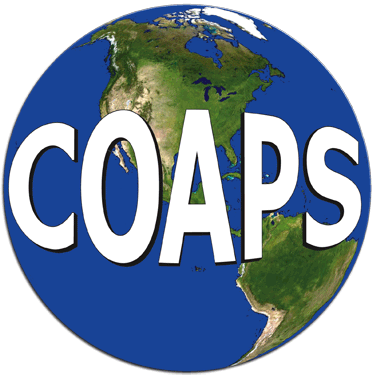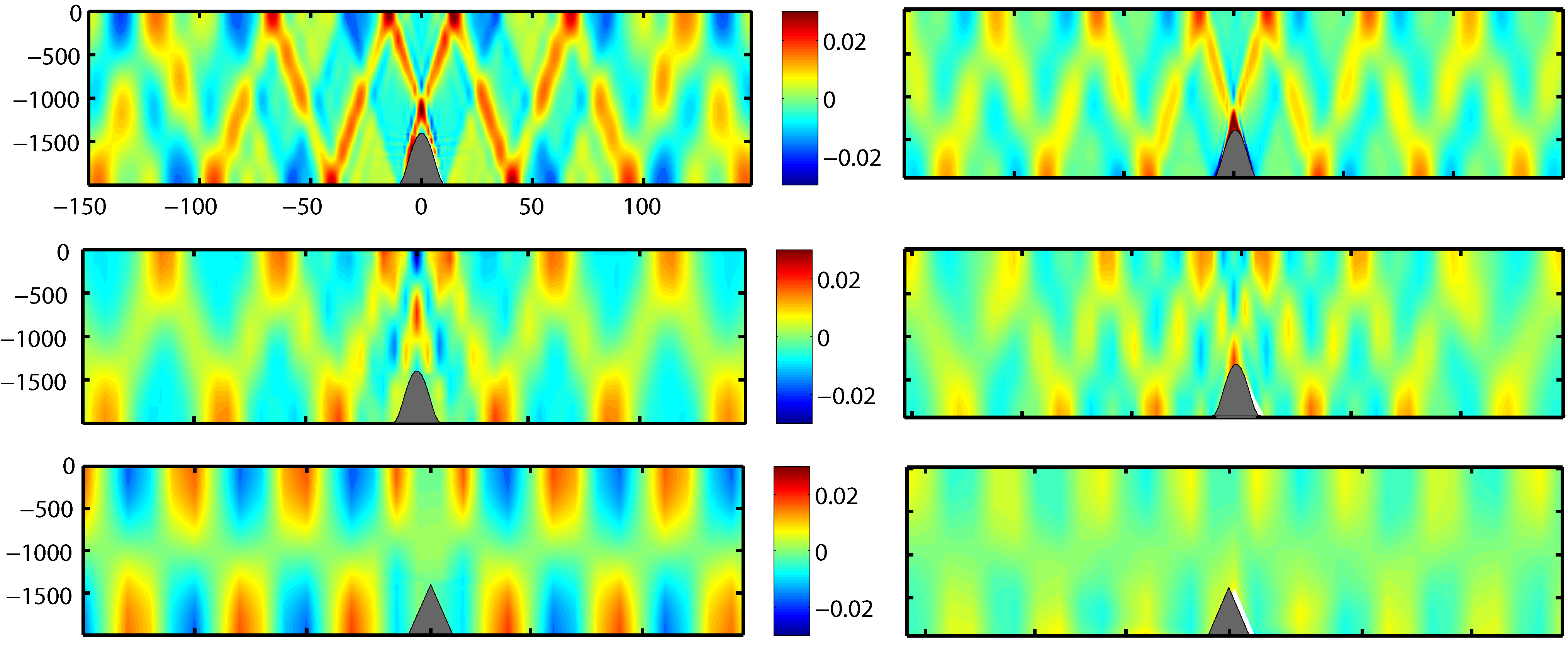
Motivation
Internal wave breaking is one of the primary source for turbulent mixing in the ocean interior and consequently plays an important role in maintaining the strength of the thermohaline circulation. It is therefore important to have a good representation of these waves and their associated mixing in Oceanic General Circulation Models (OGCMs).
Objectives
This study aims to understand how well these OGCMs represent the internal wave generation and propagation mechanisms. Specifically, we investigate the impact of the horizontal/vertical model grid length resolution choice on simulating the internal wave field. We also document and quantify the numerically-induced mixing in 'fixed'(or Eulerian) coordinate models (i.e., ROMS, MITgcm; σ- levels and z- respectively) due to the internal wave propagation. This spurious mixing does not exist with isopycnic models (i.e., HYCOM).
The methodology consists on conducting a series of idealized numerical simulations with HYCOM, ROMS, and the MITgcm that are compared against analytical solutions (Khatiwala, 2003).
An example of the generation of internal waves by interaction of a barotropic tidal flow with a ridge using ROMS (Δx = 1.5 km, 45 levels)
vertical section of U baroclinic velocity (colored contours). Each time index indicates 15 min has passed.

More info
An example of the impact of the model horizontal choice
Snapshots (same time) of the U baroclinic velocities (m.s-1).
Left panels are HYCOM simulations. Right panels are ROMS simulations.
Top panels are with Δx=1.5km, Middle panels are with Δx=5km, and bottom panels are Δx=10km.

More info
IW Research Team
Dr. E. Chassignet , Professor, Director of COAPS
Dr. S. Morey , Assistant Scholar/Scientist
Dr. D. Dukhovskoy , Research Associate
Dr. A. Bozec , Assistant in Research
F. Gouillon , Post-Doc
Home
"Either you decide to stay in the shallow end of the pool or you go out in the ocean" C. Reeve
Center for Ocean Atmospheric Prediction Studies
Florida State University
200 R.M. Johnson Bldg, Tallahassee, FL, 32306-2840
contact me